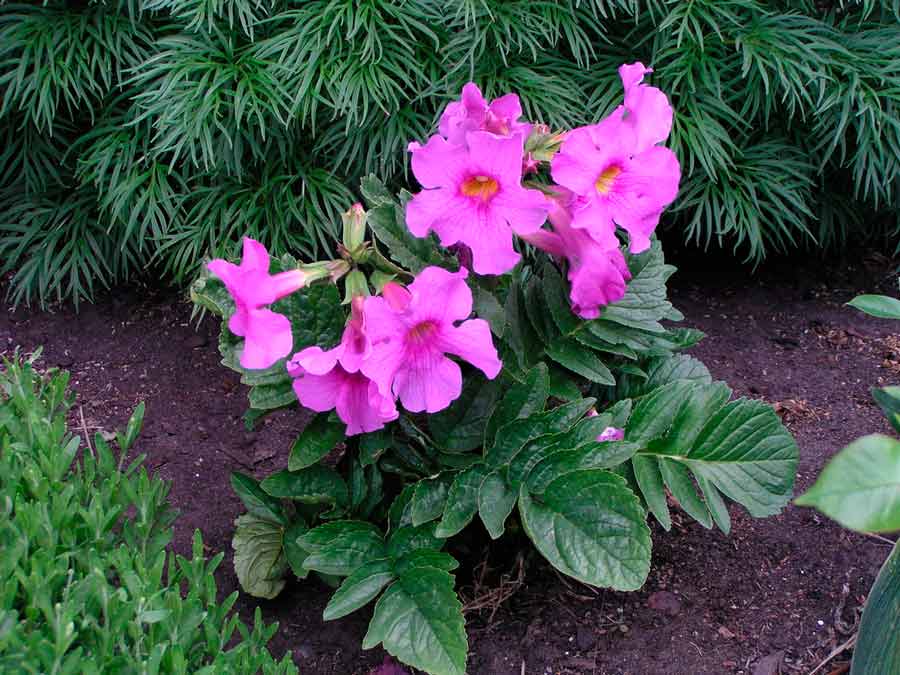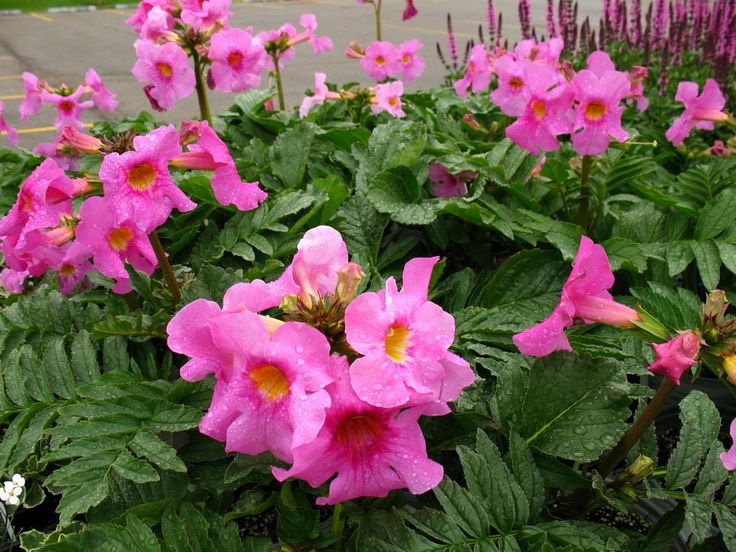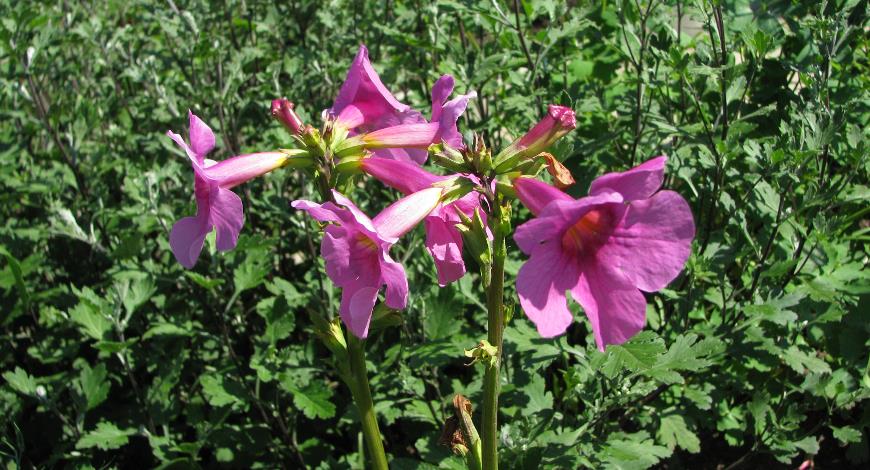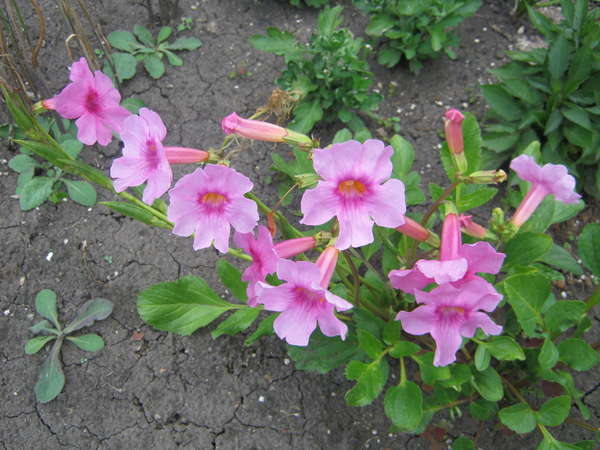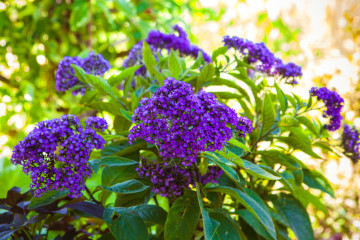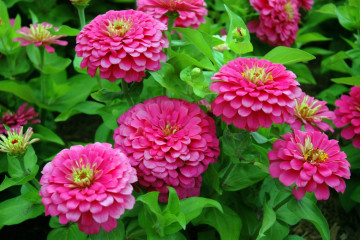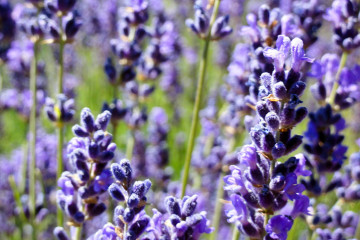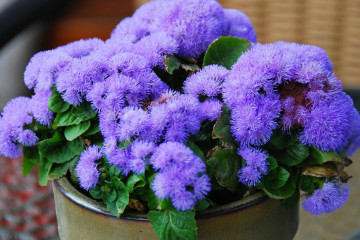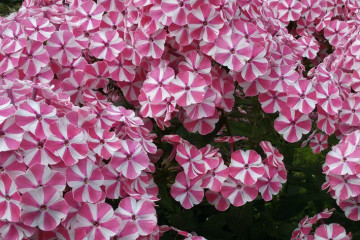Incarvillea delavayi - growing from seeds
Content:
The owners of private houses are trying in every possible way to decorate their plots. The main decoration of any yard is a lush flower bed in which gorgeous flowers are planted, effectively complementing each other. When creating garden compositions, homeowners often use Incarvillea delavea, which amazes with delicate and exquisite flowering and does not require complex maintenance.
Description of the plant
Incarvillea delavea belongs to the category of herbaceous plants, the height of which can reach 180-200 cm. Depending on the type of ornamental culture, there are annual, biennial or perennial plants.
The root system can be woody or tuberous. Stems, according to the description, growing upward, are branched or simple. Leaf plates can be arranged alternately or collected in root rosettes.
A fine-toothed edge can be seen on the foliage. The flowers have tubular corollas and a bell-shaped calyx.
Incarvillea flowers, painted in red, yellow, pink shades, can be collected in inflorescences of both paniculate and racemose type. The fruits are bipartite polygonal capsules containing winged pubescent seeds.
Incarvillea: planting and care
Incarvillea belongs to unpretentious plants. Any soil is suitable for planting an ornamental culture. It is important to provide a drainage system in each hole to avoid stagnant water. For this purpose, you can use:
- coarse sand;
- fine gravel;
- expanded clay.
Experts recommend adjusting the mode of watering the Incarvillea flower in such a way that the soil does not have time to dry out.
Top dressing must be applied once every season. It is advisable to fertilize the soil in mid-May, when the green part of the plant enters the active growth phase. As a top dressing, a complex mineral fertilizer or mullein infusion is used. The dosage indicated by the manufacturer should not be exceeded, so as not to provoke a decrease in the frost resistance of the ornamental culture.
Planting and caring for Incarvillea Delavea is not difficult, so even an inexperienced florist can take up growing plants.
Preparing for winter
The plant can overwinter in the ground. To prepare flowers for the winter period, it is necessary to mulch the land in which the culture is planted. As a mulch, you can use a layer of sawdust or spruce branches. The thickness of the layer should be within 7-10 cm. At the end of March, the mulch must be removed to avoid the occurrence of fungal diseases.
Bloom
The period of plant budding falls on the last month of May. The tops of the stems are literally dotted with buds, which at first look twisted and do not at all resemble the appearance of future flowers.
Every day, the shape of the ovary changes, gradually transforming into funnel-shaped flowers, which can be colored in:
- coral;
- purple;
- pale pink shades.
The diameter of the flowers reaches 55-60 mm.
Flowering occurs in early summer. In the absence of normal lighting, the bases of the flowers, resembling gramophones, are painted in a pale yellow tone. Under normal conditions, the base shade is more saturated. You can admire the flowering of Incarvillea for two months. Gradually, instead of flowers, fruits with winged seeds are formed on the herbaceous crop.
Reproduction of incarvillea
Seed material of an ornamental culture can be sown both in seedling pots at home, and directly into open ground. Experienced flower growers recommend planting work in the spring and autumn months.
If you want to achieve lush flowering in the year of planting, it is recommended to use the seedling method described below.
- Seed material is stratified. For this purpose, a couple of months before planting, the seeds are placed in a peat substrate and transferred for 45-60 days to the lower shelf in the refrigerator. The stratification procedure is usually carried out in the middle of winter.
- After a specified period of time, it is necessary to prepare containers with drainage holes in order to plant seeds.
- The pots are filled with self-prepared soil based on leafy soil, peat and river sand. Before filling the containers with soil, you need to send it to the oven for 25-30 minutes. After that, the soil must stand for a couple of days in order to restore the natural microflora.
- Incarvillea seeds are spread over the surface of the earth, covered in pots. A small layer of sand is sprinkled on top of the seed, the thickness of which should not exceed 8-10 mm.
- The soil is moistened with a spray bottle.
- Containers with Incarvillea plantings are covered with a film material and transferred to a room, the temperature of which is in the range of 18-20 ° C.
- The first shoots will appear 10-15 days after planting. The film material is removed from the containers.
- After that, you can transfer the pots with seedlings to a well-lit area, the temperature in which reaches 19-21 ° C.
- Every day the soil is slightly moistened with a spray bottle. As soon as 3-4 leaves appear on the seedlings, you can cut the Incarvillea into separate glasses / pots. Planting seedlings on an open bed is carried out at the beginning of summer, when the threat of night frosts has passed. A few weeks before planting flowers in open ground, it is necessary to systematically take out the hardening pots outside. Taking care of a plant is not difficult if you follow the recommendations of experts.
When choosing a place for planting Incarvillea, you should give preference to slightly shaded areas.
If there is a desire to sow seed directly into open ground, these activities are best carried out in early May. Flowers grown in this way will receive maximum hardening and will not suffer from nighttime cold snaps. After planting seeds in open ground, shoots can be expected after 14-21 days.
Transfer
Incarvillea needs a systematic transplant, which contributes to the extension of its life span and lush flowering.
The transplant is carried out, as a rule, every 3-4 years. It is best to postpone the procedure until the last weeks of August. When planting bushes, it is worth paying attention so that the root collar rises a few centimeters above the ground surface.
Growing problems
Incarvillea often suffers from ailments and pests.It is very important to systematically examine the bushes in order to identify the problem in a timely manner. Quite often, decorative culture suffers from:
- Powdery mildew, in which the foliage of plants is deformed, red-brown spots and white spiderweb bloom appear on the green mass. With the formation of a mosaic color, the leaf plates begin to die off.
- Black spot, which can be identified by black spots on foliage, the diameter of which can reach 10-15 mm. The spots gradually merge with each other, and the leaf plates die off.
- Gray rot. Stems against the background of the disease begin to turn brown. A fluffy smoky coating forms on them. If you do not take action, the plant will soon die.
To cope with diseases, experienced florists recommend in a timely manner:
- remove fallen leaves;
- cut off affected shoots;
- carry out the processing of decorative plantings with special means.
The most effective drugs that help to cope with ailments in a short period of time are considered to be of the type:
- Topaz;
- Thanos;
- Vectra;
- Gamaira;
In addition to the listed diseases, when growing an ornamental crop, problems such as:
- yellowing of foliage, indicating improper care of the plant;
- browning of foliage, which occurs against the background of systematic waterlogging of the soil;
- decay of the root system, indicating an incorrect watering regime.
Incarvillea is often invaded by spider mites, mealybugs and aphids. To cope with pests, it is enough to carry out the treatment using insecticidal preparations.
Incarvillea can become a real decoration of any garden plot. Gorgeous flowers will fit perfectly into any landscape design. Compositions of decorative culture planted near the catnip, Snowtop Incarvillea, Chinese Incarvillea (White Swan) and hydrangea look especially good.
